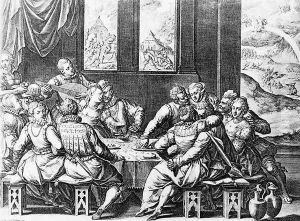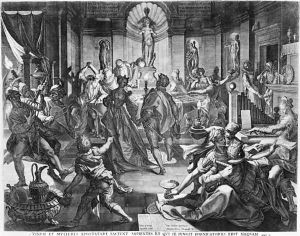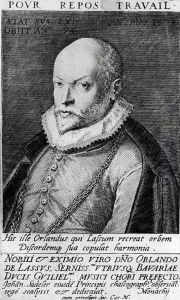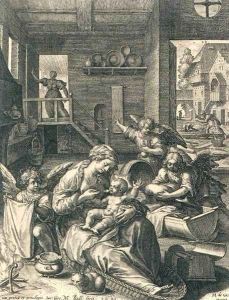Jean or Johann Sadeler Paintings
Jean or Johann Sadeler was a prominent Flemish engraver, born in 1550 in Brussels, then part of the Habsburg Netherlands. He came from a family deeply involved in the art world, with several members being notable for their contributions to printmaking and engraving. Sadeler's work and career are often discussed in the context of the Northern Renaissance, a period characterized by a resurgence of interest in classical antiquity, coupled with innovations in art, literature, and science.
Sadeler left his homeland early in his career, traveling extensively across Europe. His journey took him to Germany, Italy, and ultimately to Prague, in the service of Rudolf II, Holy Roman Emperor. This period was crucial for his development as an artist, as he was exposed to a wide range of artistic styles and techniques. His engravings are known for their meticulous detail, complexity, and the integration of Northern and Italian Renaissance artistic elements. Sadeler's subjects ranged from religious and mythological scenes to portraits and landscapes, reflecting the broad scope of Renaissance interests.
Throughout his career, Jean Sadeler collaborated with many prominent artists of his time, transferring their paintings into engravings. This practice not only helped disseminate the works of these artists to a broader audience but also established engraving as an essential art form in its own right. Sadeler's technique was innovative and influential, contributing significantly to the development of printmaking in Europe. His ability to capture intricate details and his nuanced use of shading and texture made his prints highly sought after, both in his own time and today.
Jean Sadeler died in 1600 in Venice, Italy, leaving behind a legacy that would influence generations of printmakers. His work is preserved in numerous collections worldwide, showcasing the skill and creativity of this master engraver. Sadeler's contributions to the art of engraving highlight the importance of printmaking in the dissemination of artistic and cultural ideas during the Renaissance, making him a key figure in the history of European art.



